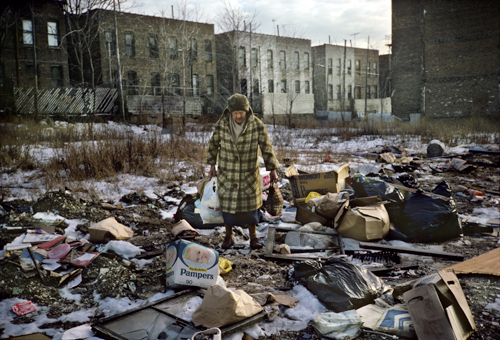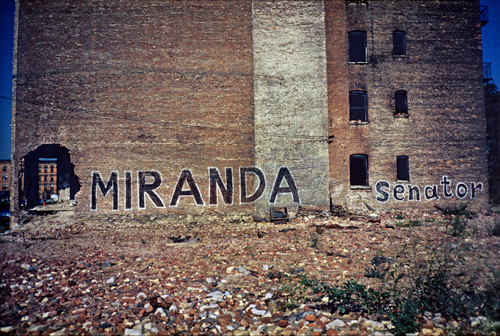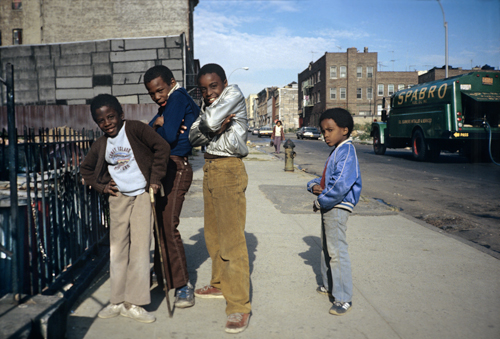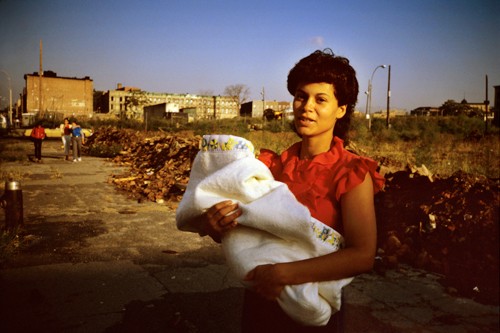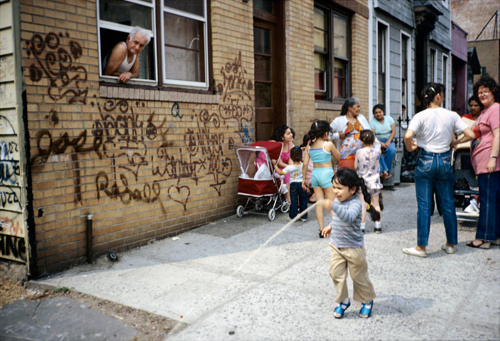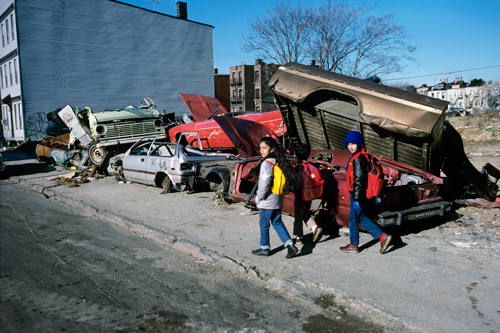MERYL MEISLER’S PORTRAITS of Buckwick in the 1980’s are heartbreaking and beautiful. In 1981 she was assigned to teach art in a public school that was surrounded by a totally burned out landscape. Armed with a cheap camera and a big disarming smile, she found visual poetry all around her. She has made a deeply moving portrait of a neighborhood and its inhabitants. Like the best documentarians, Meryl’s photographs transcend the simple act of capturing a moment and turn that moment into something that lingers in our consciousness. They’re haunting reminders of what Brooklyn used to look like.
In her words-
“Was the other art teacher killed?
I could only imagine why a full time teaching position was available in Bushwick the week before Christmas 1981. My NYC Board of Ed. file number was finally at the top of the placement list; I could accept a full time teaching position at Roland Hayes Intermediate School 291 in the Bushwick section of Brooklyn or go to the bottom of the waiting list. Why the anxiety of leaving a part time job in East New York to go to Bushwick? On July 13, 1977, while readying to dance the night away at Studio 54, NYC blacked out; afterimages of looting and fires in Bushwick were forever burned into my brain.
Bushwick looked like a ghost town war zone. I.S. 291 was one of the few functioning structures on the block; it felt like a hybrid school, shelter and prison. It was bewildering, kids trying to learn and enjoy day-to-day childhood life in the midst of chaos and despair, amazing teachers whose sense of duty provided structure and purpose within a shattered neighborhood’s cinderblock fortress surrounded by fallen timber, crumbled concrete, broken bricks, cooled ember vestiges after the ashes had blown away. Shunned by media’s eyes since the blackout, Bushwick seemed to have hit the skids. To me the neighborhood’s natural light was so beautiful; kids were kids and the vacant buildings whispered stories. I taught in Bushwick from 1981 to 1994; it was never boring.
Walking to and from the subway everyday was an adventure, no telling who would be hanging out or what would show up on the street or in a strewn lot. I took pictures in my mind but wasn’t so quick to carry a camera because the previous school year, on the last day before summer vacation, an intruder came to the Lower East Side classroom threatening to use his gun if I didn’t hand over my beloved medium format camera. By February 1982, I could no longer resist; and started carrying an inexpensive plastic point and shoot pocket camera loaded with cheap transparency film and developed in the least costly way possible. My route was rhythmic and limited, walking in the morning from the Myrtle Avenue Station up Palmetto Street. After school I’d try a different route back to the subway or to my parked car, each street filled with its own mystique.
My classroom was windowless, but if subbing in a room with a view, I took the little camera. The photos are like a wink, quick sketches of the places and people in this small section of Central Bushwick during a disparate decade. Some of the kids I knew from school, most of the people are strangers whom I politely asked permission to take their picture; the buildings stood waiting for their portraits, never knowing when they could stand no more. Most of the slides were never taken out of their boxes until nearly three decades later as I edit, scan, retouch and print. The more I look at them, the more I see.
Revisiting to photograph Bushwick now, I feel like Jimmy Stewart playing George Bailey coming home to Pottersville in “It’s a Wonderful Life.” There’s been a paradigm shift. Burnt out Bushwick has become fertile ground for community activism and the arts.
Why did I take these photographs? Were they a visual diary? Did I know the neighborhood was going to make a come back? Sometimes I sense, like Candide with a camera, I was sent to Bushwick after the ashes blew away to teach and learn while quietly documenting what I saw for “all is for the best in the best of all possible worlds.”
And here is a perfect New York ending to this story – 20 years later the little girl in the blue shorts in the photo “Jump-rope” contacted Meryl. She had become a writer and was writing a memoir of her childhood in this desolate city. She and Meryl collaborated on a project entitled “Defying Devastation,” which opened in a gallery in the newest hot hip neighborhood in Brooklyn –Bushwick.
For more information on Meryl Meisler’s projects please take a look at her website: www.merylmeisler.com

